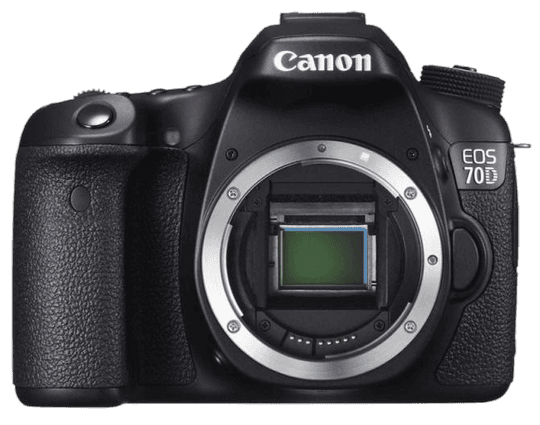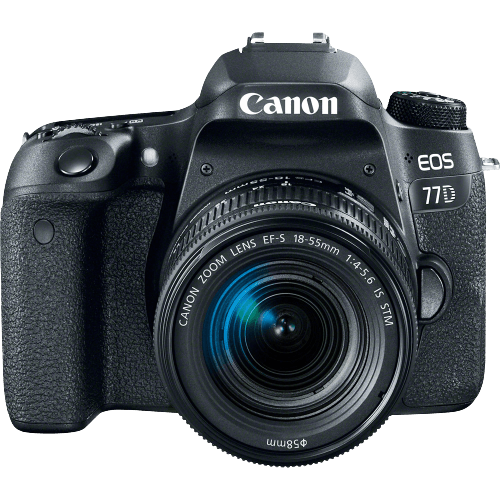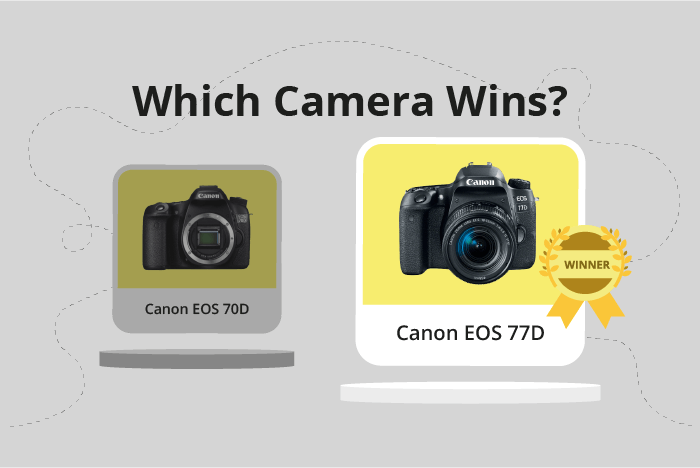Canon EOS 70D vs EOS 77D Comparison
Canon EOS 70D

Canon EOS 77D

The Canon EOS 77D takes the lead with a score of 63/100, while the Canon EOS 70D trails behind at 60/100. Both cameras are DSLRs, released in 2013 and 2017 respectively. They share similar dimensions and weight, with the 70D measuring 139 x 104 x 79mm and weighing 755g, while the 77D comes in at 131 x 100 x 76mm and 765g.
The EOS 77D has the advantage of being a more recent release, with a lower launch price of $900 compared to the EOS 70D’s $1199. This makes it a more budget-friendly option without sacrificing quality. On the other hand, the EOS 70D is slightly lighter, which might appeal to those prioritizing portability.
Taking these factors into consideration, the Canon EOS 77D offers better value for money, while the Canon EOS 70D has a minor edge in terms of weight. Ultimately, the choice will depend on individual preferences and budget constraints.
Canon EOS 70D vs EOS 77D Video Performance
The Canon EOS 77D wins in the video capabilities comparison with a score of 70/100, while the Canon EOS 70D scores 43/100. Both cameras share Full HD video resolution and 1920 x 1080 video dimensions. However, the EOS 77D surpasses the EOS 70D in terms of video frame rate and time-lapse functionality.
The EOS 77D stands out due to its higher maximum video frame rate of 60fps, which is double that of the EOS 70D’s 30fps. This higher frame rate allows for smoother and more detailed video capture, making it ideal for fast-paced action scenes or slow-motion footage. Additionally, the EOS 77D includes built-in time-lapse functionality, which enables users to create stunning time-lapse videos without the need for external equipment or software. This added feature further enhances the EOS 77D’s video capabilities and offers more creative options for videographers.
The EOS 70D, despite having a lower video score, is not without its merits. It still offers Full HD video resolution and 1920 x 1080 video dimensions, which are suitable for most casual video recording purposes. However, it lacks the higher frame rate and built-in time-lapse functionality that set the EOS 77D apart.
Considering the higher video score, faster frame rate, and built-in time-lapse functionality, the Canon EOS 77D is the superior choice for those seeking advanced video capabilities. The Canon EOS 70D, while not as impressive in its video features, remains a viable option for users who prioritize other aspects of camera performance and do not require the enhanced video capabilities offered by the EOS 77D.
Canon EOS 70D vs EOS 77D Features and Benefits
The Canon EOS 77D emerges as the winner in this comparison with a feature score of 97, while the Canon EOS 70D scores 70. Both cameras share several specifications, including a 3-inch screen size, 1,040,000-dot screen resolution, touchscreen capability, flip screen, GPS absence, and WIFI connectivity.
The EOS 77D outperforms the 70D in terms of connectivity by offering Bluetooth capability. This feature allows the 77D to connect with other devices more easily, providing users with additional options for transferring files and controlling the camera remotely.
On the other hand, the EOS 70D does not have any significant advantages over the 77D in terms of features. Both cameras have the same screen size, resolution, and functionality, and neither camera has GPS. The only difference in their feature scores is the presence of Bluetooth in the 77D, which gives it a higher score.
In comparing these two cameras, it is clear that the Canon EOS 77D has a slight edge over the EOS 70D due to its Bluetooth capability. This added feature enhances connectivity and convenience for users, giving the 77D a higher feature score. However, both cameras share many similar specifications, and the lack of any major advantages for the 70D makes the 77D the better choice in this comparison.
Canon EOS 70D vs EOS 77D Storage and Battery
The Canon EOS 70D outperforms the Canon EOS 77D in storage and battery with a score of 37/100, while the 77D scores 29/100. Both cameras have a single memory card slot and accept SD, SDHC, and SDXC memory cards. Neither camera offers USB charging.
The 70D’s superior battery life allows for 920 shots per charge, using the LP-E6 battery type. This is a significant advantage over the 77D, which only provides 600 shots per charge with its LP-E17 battery.
The 77D does have a slight edge in memory card compatibility, as it supports UHS-I SD cards, allowing for faster read and write speeds. However, this advantage is minimal compared to the 70D’s longer battery life.
Considering these factors, the Canon EOS 70D is the better choice for storage and battery performance. The 77D’s UHS-I compatibility is a minor advantage, but it does not outweigh the 70D’s significantly longer battery life.
Canon EOS 70D vs EOS 77D – Our Verdict
Are you still undecided about which camera is right for you? Have a look at these popular comparisons that feature the Canon EOS 70D or the Canon EOS 77D:

